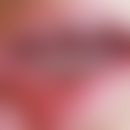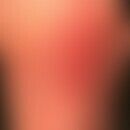Synonym(s)
DefinitionThis section has been translated automatically.
Extract from arnicaflowers (Arnicae flos), rarely from the root(Radix arnicae). The preparation is made from 1 part arnica flowers and 10 parts 70% ethanol. For formulations see below. Arnicae flos.
Quality is specified in the European Pharmacopoeia.
Field of application/useThis section has been translated automatically.
Externally (as compresses, solutions, creams): Different dilutions are always recommended (Note: undiluted Tinctura arnicae may cause bullous contact dermatitis).
Internal (formerly Expectorans and Analepticum): internal application is not recommended. Gastrointestinal and cardiac complications
You might also be interested in
IndicationThis section has been translated automatically.
External: Tinctura arnicae can be used as an embrocation or compress for blunt traumas, bruises, muscle and joint pain, insect bites, thrombophlebitis, chronic venous insufficiency.
It is not recommended to use on open wounds. Furthermore, arnica tincture in a 10% aqueous dilution is recommended for aphthae and non-specific periodontitis.
Undesirable effectsThis section has been translated automatically.
Contact allergy (as with other Asteraceae), in higher concentrations also toxic contact dermatitis.
Recipe(s)This section has been translated automatically.
Formulations
:10% Arnica cream (max. concentration 25%)
- Tinctura arnicae 5,0
- Unguentum emulsificans aquosum ad 50,0
- S: 10% Arnica cream for external use.
- Internal: internal applications are not recommended
Aqueous envelope (3-10%
)1 part Tinctura arnicae/ 3 - 10 parts water
Mouth rinses (10%
)1 part Tinctura arnicae/ 10 parts water
Arnica oil (10-20%)
- Tinctura arnicae 5,0/10,0
- Oleum amygdalarum ad 50,0
- S: 10%/20% Arnica oil (almond oil) for external use



